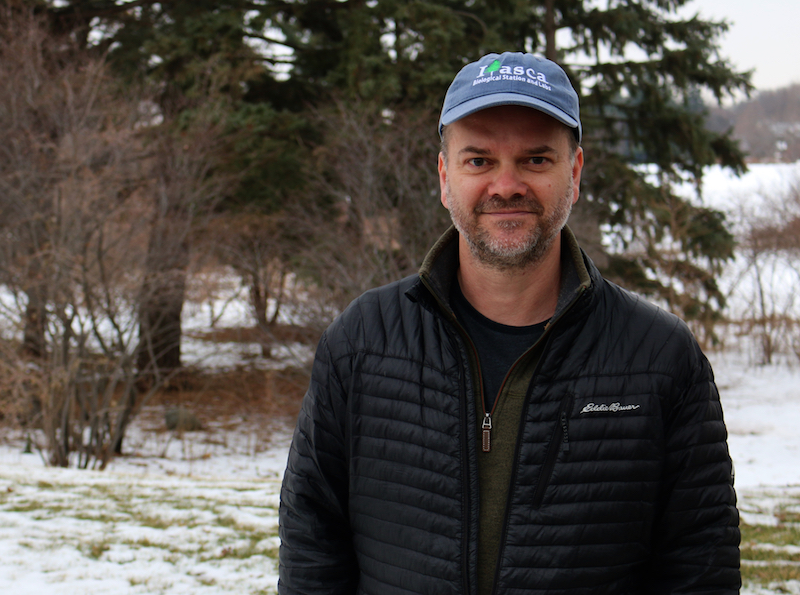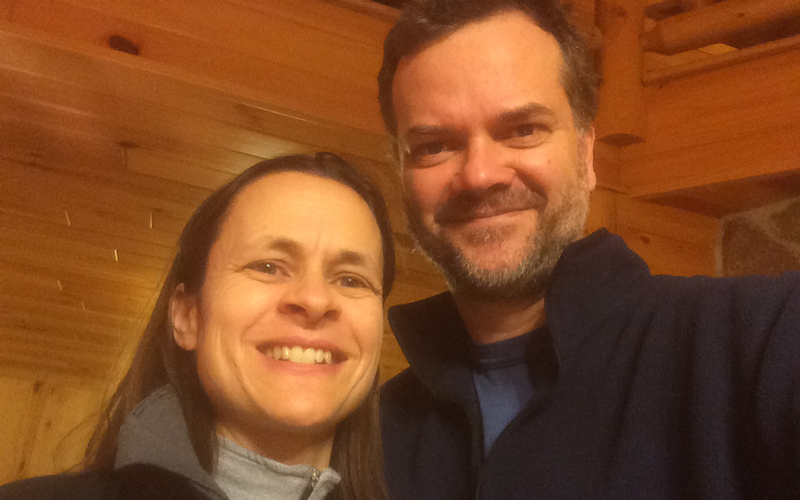Itasca Biological Station and Laboratories' new director talks about what he's most excited about, what makes Itasca unique and his favorite spot at the station.

"If we want to know how much of a footprint our activities make, we need a benchmark — that’s the 'pulse' you can measure at Itasca."
You started as director of Itasca in the new year. What are you most excited about?
The context is what excites me most. The administrative aspects of the job are timely, and I’ve got purpose — but the station in the woods is the clencher. It's about the place. Wilderness, wolves and old growth, right next to the lake. Cabins and teaching/research spaces that echo history. A bright new building, the Biome Center, with modern amenities and an outdoor fireplace. It is quite the set-up, and I, along with my family, will tuck right in. My wife Emily and I met at Mountain Lake Biological Station in Virginia’s Blue Ridge nearly two decades ago before moving to Maine for graduate school and eventually to Minnesota where we both landed faculty jobs. We are in the woods constantly to make our fun with our kids along for the ride. Directing a bio station in the northwoods is right up my alley, and Emily and the kids are as excited as I am.
The University recently purchased land near the station, which opens up much more opportunity for long-term research. You’ve talked about Itasca as a “destination for research.” Can you say a little about that?
A destination means it is not outside the back door — you’re going to earn your data at Itasca, but it’s worth it. What originally attracted me was the "sanctuary" science, largely observational work inside Itasca State Park, that could be done in the old growth forests. There is nothing better for a mycologist studying mushrooms than old-growth forest.
There are limitations, however, on doing anything manipulative like cutting limbs, trenching around roots, or creating plots for nutrient manipulations. The new land offers an opportunity to pair the sanctuary science part with manipulative trials. This offers a lot of opportunities for scientists, given that Itasca is at the Mississippi River headwaters and at an interface of three biomes, prone to shifting as we push the controls on our climate. I think it is a destination. Not like a pilgrimage for the masses — just a destination, like many other field stations, for a handful of scientists who see the research values specific to that place and who like the field station vibes.
You’ve spent lots of time in the field studying fungi and decomposition. What are some of the questions that inform your research? Do you plan to do your own field work at Itasca?
I’ve already started field work up there. I couldn’t wait. With Sam Willard, a Plant and Microbial Biology undergraduate student in my lab, we started what we call "Itasca in a Bottle." We isolated 25 or so wood decomposer fungi into petri plates, and nearly as many bacteria associated with those fungi inside the wood. Sam is planning a directed-research project for spring to do reciprocal trials in glass bottle microcosms to test which bacteria-fungus associations are "friendly," providing mutual benefits — in my field, we have been overlooking the role of bacteria in governing where fungi can do business. This work has important implications on decomposition rates in nature, given that wood harbors the lion’s share of Earth’s aboveground carbon — these fungi release most of that carbon as carbon dioxide, a greenhouse gas.
The Itasca in a Bottle idea is a small reflection of a much larger push in my group, which is 12 students and postdocs, at present — a wonderful group of scientists. We want to couple the biochemistry microcosm work we have been doing for over a decade to new efforts in forest ecology, to mesh two lines of research that have been divided methodologically and culturally. These nutritional modes we have been studying deeply are known in other circles as "traits," and ecologists and ecosystem modelers, alike, want to know how these traits at smaller scales affect larger emergent patterns. We think we can help. This kind of bridging between disciplines has been a push for many years now, but there is still a lot of low-hanging fruit out there if we’re willing to dive in beyond the comforts of our traditional disciplines. This is why I think it is important that students like Sam are immersed in interdisciplinary environments all along, even as they drill down in one subject in their scholarly work. Itasca is one of those environments.
You’ve described field stations like Itasca as places where we can “take the pulse of Earth’s ecosystems.” Can you talk a little bit about that?
The footprint of humans on Earth is massive. Itasca State Park was established in 1891 (our oldest state park) to minimize our footprint around the headwaters of the most storied river in the United States, the Mississippi. That was incredibly forward thinking, and Minnesotans can be extremely proud of that. We do not need to debate that human activities can hurt the environment — we knew this in 1891, and smart, vocal advocates worked to protect the future for us all to enjoy.
The refuge insures clean water at the source, and we can thank microbes in soils that filter water entering the lake. This is a biotic filtration mechanism that we have always relied on, but that we are only now starting to understand. In creating this sanctuary around the headwaters, the park also protected old-growth forests that, as we have logged elsewhere, now hold 25 percent of the total old growth in Minnesota. If we want to know how much of a footprint our activities make, we need a benchmark — that’s the "pulse" you can measure at Itasca. We are so lucky to have that access in the park, along with its options for recreation and reflection. The last meeting the former Director Dave Biesboer scheduled before retiring was a visit that included me and the park Director Bob Chance. I really appreciated that, and I’m excited to maintain that relationship.
Do you have a favorite spot at the station yet?
The dining hall. It’s the hub. Food brings people together around the same, familiar activity, and the kitchen staff at Itasca are GREAT! There are healthy options, endless coffee, and communal tables. My kids head toward it like a magnet, and we always leave with popcorn. It’s the perfect finish for a day in the woods or on the lake.
Read Jonathan's vision statement for Itasca and an essay about what draws him to the station.

Schilling and his wife Emily in cabin 4 at Itasca welcoming the new year in their new home away from home.